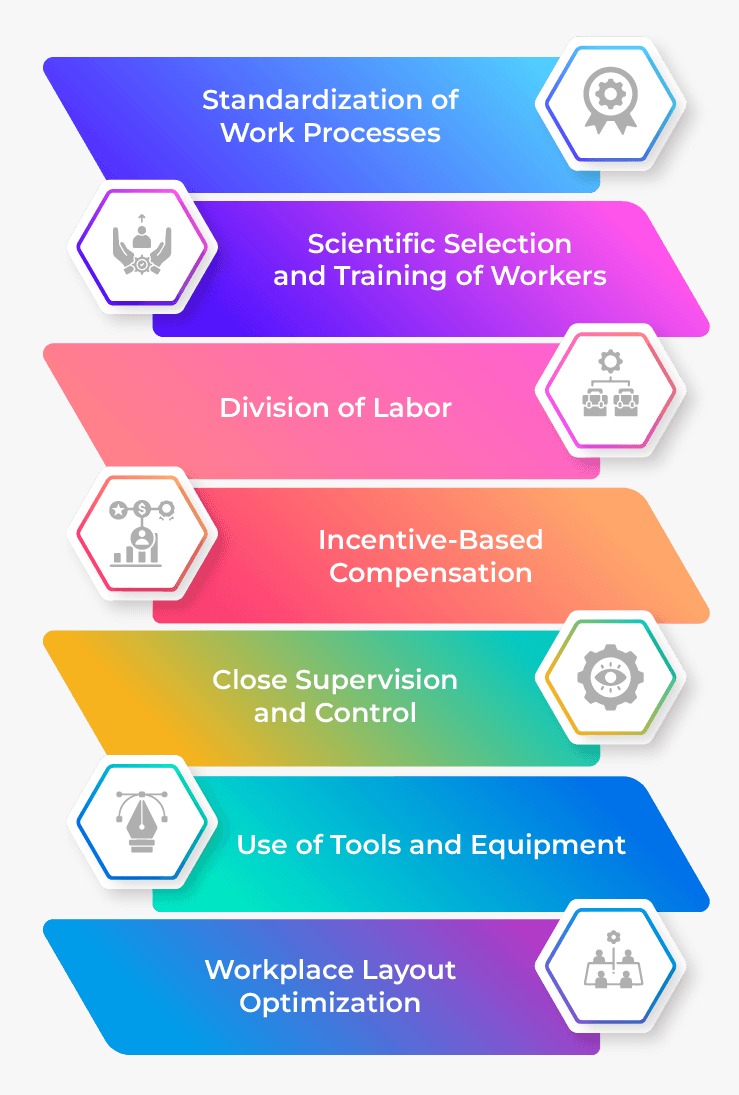
How did Taylor's Scientific Management boost work efficiency

In the realm of industrial efficiency and productivity, Taylor's scientific management stands as a significant development. Formulated by Frederick W. Taylor in the early 20th century, this approach revolutionized the way work was organized, leading to unprecedented levels of efficiency in production environments. By systematically analyzing workflows and optimizing tasks, Taylor's principles not only elevated output but also reshaped the relationship between management and labor. This introduction sets the stage for exploring how Taylor's methodologies continue to influence modern industrial practices.
Understanding Taylor's scientific management is crucial in today’s context, where businesses strive for efficiency amid global competition. The core tenets of this management theory focus on leveraging empirical data to improve work processes and increase productivity. This article delves into the historical backdrop of Taylor's life, the principles he established, and the lasting impact of his work on labor efficiency and management practices.
- The Concept of Scientific Management
- The Four Principles of Scientific Management
- Time Studies: Measuring Work Efficiency
- Standardization of Tools and Work Processes
- The Role of Training and Selection of Workers
- Impact on Industrial Productivity
- Critique and Challenges of Taylorism
- The Legacy of Taylor's Scientific Management
- Conclusion: Modern Applications of Taylorism
The Concept of Scientific Management
Taylor's scientific management is defined by the application of scientific methods to analyze and improve work processes. This approach seeks to identify the optimum way to perform a task, thereby increasing productivity and minimizing waste. The central premise rests on the belief that work efficiency can be attained through meticulous observation and measurement. By breaking down tasks into their most elemental parts, Taylor laid the groundwork for workers to perform at their highest potential while enabling management to maintain greater control over production.
Historical Context: Taylor's Early Life and Career
Frederick W. Taylor grew up in an era of industrialization, which profoundly shaped his views on efficiency and productivity. After a brief academic stint at Phillips Exeter Academy, Taylor began his career at the Midvale Steel Company. It was here that he encountered the inefficiencies of traditional manufacturing practices. Through perseverance and dedication, he developed innovative time and motion studies aimed at identifying the best methods to complete tasks.
In 1883, Taylor achieved his mechanical engineering degree, which acted as a stepping stone for his future endeavors as a consulting engineer. His experience at key companies, including Bethlehem Steel, allowed him to experiment with various scientific management techniques. Over time, his meticulous analyses and practical applications facilitated a paradigm shift in how work was performed across industries.
The Four Principles of Scientific Management
At the heart of Taylor's scientific management are four foundational principles that outline his approach to efficiency:
- Science, Not Rule of Thumb: Taylor asserted that decisions should be based on systematic study and scientific principles rather than arbitrary guidelines.
- Harmony, Not Discord: Stressing the importance of cooperation between management and labor, he believed that a harmonious workplace leads to greater productivity.
- Cooperation, Not Individualism: Promoting collective effort over individualism, Taylor encouraged shared goals and teamwork within the workforce.
- Development of Each Worker to his Greatest Efficiency: He emphasized the regular training and continuous improvement of workers to maximize their potential.
These principles effectively transformed the operations of numerous factories, establishing benchmarks for efficiency that continue to be referenced in present-day practices.
Time Studies: Measuring Work Efficiency
One of Taylor’s most significant contributions to Taylor's scientific management was the implementation of time studies. Taylor meticulously observed workers as they performed tasks to determine the amount of time each step took. By employing a stopwatch and detailed recording methods, he could identify inefficiencies and bottlenecks in workflow. This data-driven approach enabled him to establish standardized labor times, setting performance benchmarks for workers.
These time studies provided crucial insights into how tasks could be streamlined. By reducing the time needed to complete specific functions, Taylor’s methodologies illustrated remarkable gains in productivity. Furthermore, these studies fostered a performance-oriented culture where workers were motivated to meet and exceed established standards.
Standardization of Tools and Work Processes
A key component of Taylor's scientific management was the standardization of tools and processes. Taylor believed that efficiency could be maximized through the uniformity of equipment and work methods. By establishing standardized procedures, factories could eliminate variability in production, ultimately leading to a more consistent output quality.
Standardization also made training new employees easier, as everyone would be optimized to use the same tools in the same manner as their predecessors. Consequently, the emphasis on uniformity not only led to enhanced productivity but also ensured that quality was maintained, thereby solidifying companies’ reputations in their respective markets.
The Role of Training and Selection of Workers
In addition to optimizing tasks and standardizing processes, Taylor's scientific management underscores the significance of worker training and selection. Taylor argued that hiring the right people for the job and providing them with adequate training were integral components of achieving operational efficiency. He championed the idea that workers should be selected based on their skills and competencies, which would, in turn, enhance overall productivity.
Training programs were designed to instruct employees on the best methods learned through time studies, ensuring every worker understood their role's expectations. This investment in human resources not only increased skill levels but also fostered a culture of loyalty and dedication, as employees felt valued and empowered in their positions.
Impact on Industrial Productivity
The implications of Taylor's scientific management reached far beyond individual factories; they reverberated throughout entire industries. Taylorism catalyzed increases in productivity levels across manufacturing sectors, significantly reducing operational costs and production time. The principles he established laid the groundwork for modern mass production techniques, where efficiency became a cornerstone of successful industrial practices.
As businesses began to adopt Taylor's methodologies, they noted that their output soared while unit costs plummeted. This shift also contributed to economic growth, as industries that embraced scientific management saw remarkable improvements in profitability, allowing them to invest more in operations and expand their reach.
Critique and Challenges of Taylorism
Additionally, some critics contended that Taylor's methods were overly mechanistic, treating workers more as cogs in an industrial machine than as individuals with unique skills and needs. This approach sometimes resulted in labor unrest and pushback, as workers sought greater autonomy and recognition within their roles.
The Legacy of Taylor's Scientific Management
Today, the legacy of Taylor's scientific management endures, as many principles remain relevant across diverse industries. While modern work environments often adopt more collaborative and flexible structures, the foundational ideas of scientific management still play a vital role in improving efficiency and productivity. Techniques such as lean manufacturing and continuous improvement are direct descendants of Taylorism.
Furthermore, the principles espoused by Taylor paved the way for future management theorists, who expanded and adapted his teachings to accommodate changing workplace dynamics. Businesses continue to leverage aspects of scientific management, combining them with contemporary approaches to optimize operations.
Conclusion: Modern Applications of Taylorism
In conclusion, Taylor's scientific management has had a profound and lasting impact on labor efficiency across the globe. From its inception during the early 20th century to the modern-day application of its principles, the focus on systematic analysis and data-driven methods has transformed industries. While some critiques of Taylorism remain relevant, its foundational concepts continue to influence contemporary practices in management, production, and training.
As businesses strive for efficiency in an ever-competitive landscape, the insights gained from Taylor's scientific management will undoubtedly continue to play a pivotal role in shaping the future of work.
Did you find this article helpful? How did Taylor's Scientific Management boost work efficiency See more here Education.
Leave a Reply






Related posts